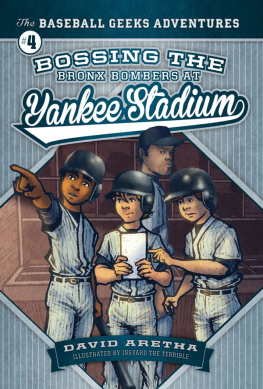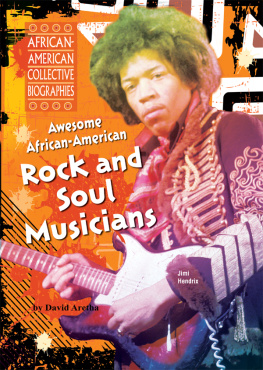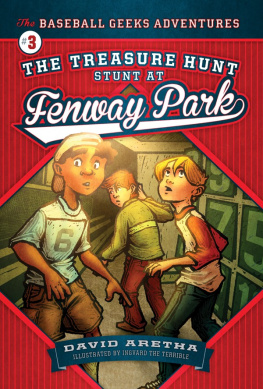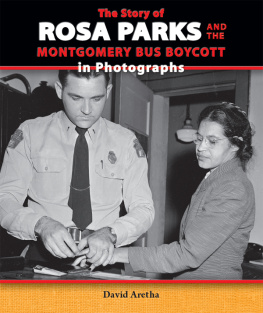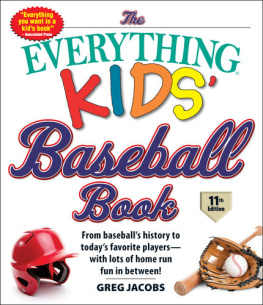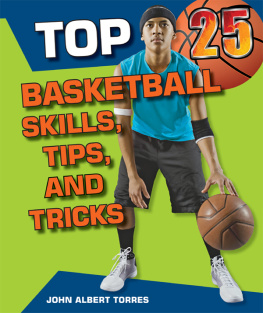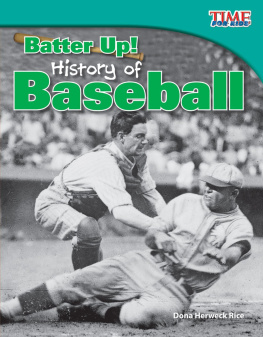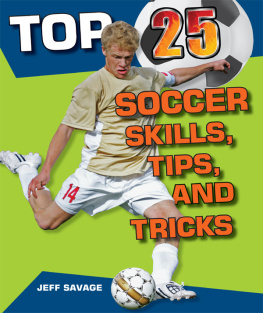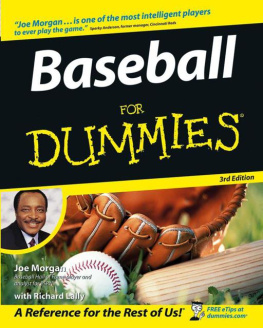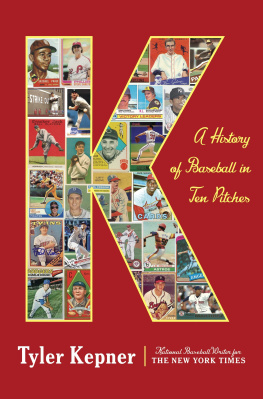THAT BALL IS GONE!
Theres no better feeling for a baseball player than crushing a ball over the outfield fence for a home run, or blowing a fastball by the batter for a strikeout. Would you like to hit like a pro and pitch like an all-star? Do you want to be a slick-fielding shortstop? From the basics of pitching to more advanced skills that will give you a winning swing, author David Aretha covers all the important baseball skills, including fun tips and tricks from the pros.
This book is valuable for any youngster who wants to play baseball the right way
Bill Deane, baseball author and historian
About the Author
David Aretha has written and edited more than two dozen baseball books, including Dodger BlueThe Los Angeles Dodgers and Power in PinstripesThe New York Yankees for Enslow Publishers, Inc.

Image Credit: Enslow Publishers, Inc.
Image Credit: Shutterstock.com (diamond diagram)
Its your first Little League game of the season, and the coach has his eye on you. Okay, champ, he says. Youre on deck. But are you ready?
Before your season begins, you need to be properly equipped. Your uniform should be neither baggy nor tight. During games, you should tuck in your jersey. For better traction when you run, wear plastic spikes instead of sneakers. Metal spikes are not allowed in Little League because of the danger they pose to opposing infielders. Also, boys should buy and wear an athletic supporter (a cup). It is highly recommended and usually required in Little League.
When you go to bat, your helmet should fit snugly. If its too loose, it might distract you. As for your bat, it shouldnt be too heavy because then you wouldnt have a smooth swing. Also, avoid a tiny bat because you might not be able to reach balls on the outside corner of the plate. Try different bats during practice to determine which works best for you.

Image Credit: Shutterstock.com
Practice your swing while waiting in the on-deck circle. Make sure you have the bat you want and your helmet fits snugly.
Lets start with the basic batting stance. First, step into the middle of the batters box with your body facing home plate. Spread your feet several inches wider than your shoulders. Point your front foot slightly (not fully) toward the pitcher. Flex your knees and hips slightly. Tilt your body very slightly forward so that you have more weight on the balls of your feet (and not on your heels). If youre a right-handed hitter, lean toward your right side and put extra weight on your right foot. Keep your head level (not cocked down) with your eyes on the pitcher.
When you grip the bat, pay particular attention to how the knuckles of the top hand align with those of the bottom hand. Grip the handle firmly with your fingers, but dont squeeze it too hard. When youre in your stance, keep the bat about six inches from your earwith your elbows up. Your bat should not point straight up or straight back. Instead, it should be halfway in between.

Image Credit: Shutterstock.com
Get a firm grip on the bat, but dont squeeze it too hard.
Finally, before you begin your swing, gently sway your hips back and forth. You might also want to wiggle your bat. This movement will keep you loose, ready to crush the pitch.

Image Credit: AP Images / Jeff Roberson
All-Star first baseman Albert Pujols is often called The Machine for his amazingly consistent hitting. The three-time National League Most Valuable Player is always prepared at the plate. You want to have a batting stance that makes you feel comfortable.
Now its time to drive the ball into the outfield. When the pitcher winds up, lean toward your back foot to load your swing. Remember to stay on the balls of your feet. Keep your eyes on the ball at all times. If you think the pitch is hittable (in the strike zone), take a full rip.
To do so, stride forward. Your front foot should move about six inches toward the pitcher. Your back foot should remain planted on the ground. Dont just swing with your arms. Move your hips forward while swinging. This allows you to put the full weight of your body into the swing. Your swing should be levelnot a big uppercut. As you swing, your head should stay down, with your eyes focused on the ball.

Image Credit: Shutterstock.com
Only swing at a pitch if you think its in the strike zone.
Relax at the plate. Take a full swing, but dont try to kill the ball. As Hall of Famer Cal Ripken advised, Concentrate on solid, hard contact.

Image Credit: Shutterstock.com
Florida Marlins shortstop Hanley Ramirez drives a ball into the outfield. Great hitting requires concentration. You dont have to hit a home run every time upjust make good contact with the baseball.
Over the last fifty years, no major-leaguer has a higher career batting average than Tony Gwynn (.338). Here is his advice: For me the most effective way to practice hitting is to use a batting tee and a bag of Wiffle balls. The sooner you hit a Wiffle ball cleanly off a tee, the sooner you will become a better hitter.
If you want to be a great hitter, you need more than just a sweet swing. You need to be smart at the plate. First, if your third base coach has signs (for bunting, stealing, etc.), make sure you know what they are. If you are unsure what they are, ask your coach or a teammate. Before each pitch, look at the third base coach to see what sign the coach is showing.
When youre on the bench, study the opposing pitcher. Is the pitcher throwing fast or slow? Low or high? Inside or outside? Consider taking the first pitch to better determine how the pitcher is throwing.
You also need to know the game situation. Some coaches prefer you to take a 30 pitch in the hopes of drawing a walk. The coach may even have a take sign. If you have two strikes, you should concentrate on just putting the ball in play instead of taking a mighty rip (and risk striking out). Just making contact is also important when theres a runner on third with less than two outs. Thats because the runner can score on a ground ball.

Image Credit: Shutterstock.com
Its important for a hitter to develop a good eye at the plate. This means youll know when to swing at a good pitch and when to hold back if a ball is off the plate.


